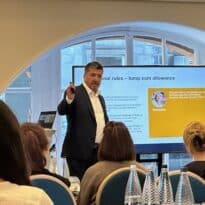After a challenging couple of years in which performance has dropped off, sustainability funds are positioned to benefit from changes to interest rates and renewed institutional investment, Ninety One’s Deidre Cooper predicts.
ESG/sustainability funds have had a challenging couple of years. After being pulled upwards on the back of the technology sector boom in 2012,sustainable funds in general fell back again as technology stocks were re-assessed and the sectors they invest in faced headwinds from geopolitics, supply-chain disruption and higher interest rates. The result, as Professional Paraplanner’s recent Parameters survey revealed, has been a waning of interest in sustainable investing.
However, according to Ninety One, this is already changing, as active investors continue to uncover businesses delivering strong operational performance leveraged to sustainable opportunities. Structural growth from sustainable drivers, such as decarbonisation, healthcare impact, and financial inclusion, looks set to persist and in some cases accelerate, the asset managers says.
This provides the potential for strong returns, alongside a differentiated opportunity set, providing sustainability funds with the opportunity to deliver uncorrelated returns within a broader portfolio.
It notes also that more recently, clean-tech sectors have seen increased interest from institutional and private market investors, suggesting public markets are under-appreciating the long-term value in these areas.
Deirdre Cooper, head of Sustainable Equity at Ninety One, says the sector “has been a difficult space over past two years”. But the area within sustainable investing where the team “has seen most enthusiasm recently,” she says, is de-carbonisation. “This is one of the most significant investment opportunities that we have seen.”
Last year US$2trn was invested in climate finance, more than double the amount in fossil fuels, she points out. “We can chalk that up as a massive win but still way less than you would want to be if investing for net zero – which would be between US$5trn and US$10trn.”
“But US$5trn would be 10% of all the capex in the world, so interest rates matter. We need lower cost of capital to help achieve that and more stable long term interest rates.
“Fast interest rate movements see companies stand-off borrowing until they know what they are locking into. The good news for the climate space is that the rates headwind is probably over, with the potential end to the rate cycle and a lowering of interest rates. I think that will absolutely help climate theme,” Cooper says.
The other big issue that has affected the sector, she says, is the rise of more popularist politicians, “which tend to be more anti-climate change”.
The introduction of more protectionist policies in the US, as an example, she says, “has increased the cost and time to achieve net zero.
“That is a choice other countries have to think about – the balance between resilience and domestic supply. Those two things are not necessarily the same – not everything has to be made domestically. Buying your solar panels from China, for example, is not the same as relying on Russia for the constant flow your gas.”
There needs to be a “much more sophisticated conversation around protectionism and tariffs”, she adds. “I would be hopeful, that policy makers will understand some of those choices.”
Nevertheless, she sees popularist policy as “something we are going to have to worry about.”
Portfolio diversifier
If “done properly” Cooper says, “sustainable investment can bring a different performance to client portfolios.
“In a world where return have been so incredibly narrow for such a long time, blending a different set of exposures into a broader multi-asset portfolio makes a lot of sense.”
A favourable trend, she notes, is increasing interest from large institutions, who are forward thinking and increasing their investment into sustainable funds. Ninety One’s Global Environment strategy has just been awarded a US$150m mandate by the California State Teachers’ Retirement System.
“Institutions are less concerned around the narrowness of the market and they want to add new strategies. Although those strategies may be a little higher volatility than in the past and have a higher tracking error, once you blend them, because the performance footprint is different you can reduce overall portfolio volatility and overall tracking error,
“The investments also provide a hedge against must faster climate action,” she says. “No one knows when that’s going to happen but at the point where we see a disorderly transition to climate action, you will want to have a strategy that is focussed on companies that are really addressing the world’s sustainability challenge.”
Main image: zaptec-DQQ2jvg-mjI-unsplash































